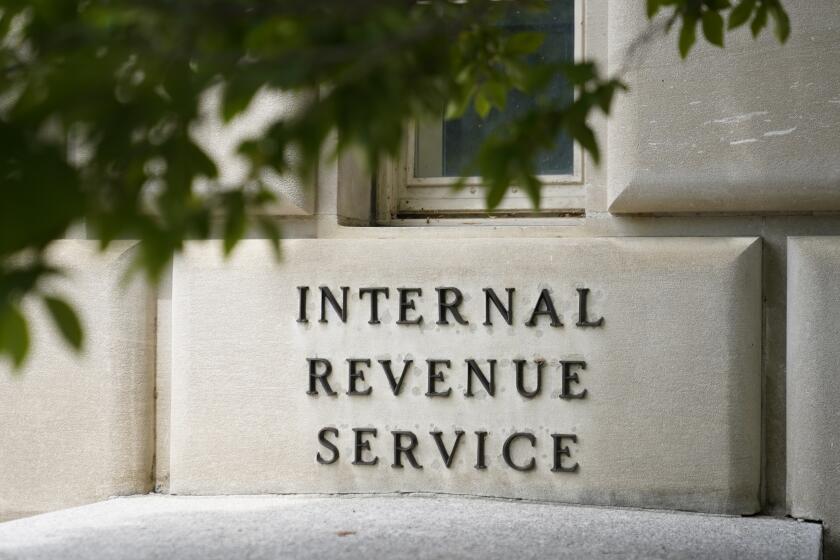Defendants Trace History to 19th Century : Wave of Suits Rocks Water-Bed Makers
- Share via
When Daniel E. Somes filed a patent in 1869 for a new kind of mattress made with water-filled tubes, he never could have imagined that his creation would become crucial to a group of Southern California businessmen in the 1980s.
But executives and lawyers for three Orange County companies have been rummaging through old patent books looking for evidence that mattresses with water-filled tubes predate modern water beds, and the flower children who popularized them, by more than a century.
American National Watermattress Corp. of Anaheim, Watercloud Bed Co. of Santa Ana and E & S Vinyl Manufacturing of Santa Ana have been sued for patent infringement by Somma Mattress Co. of Los Angeles, one of the nation’s biggest manufacturers of tubed mattresses.
Transformed Since ‘60s
It is the latest engagement in the water bed wars, which have been raging off and on for years as the simple water-filled plastic bag that passed for a bed in the 1960s has been transformed, upscaled and endlessly reinvented.
Hundreds of patents have been filed for various forms of water beds, which are manufactured by about 1,200 companies and generate annual sales of about $2 billion, according to the Waterbed Manufacturers Assn.
And many of these new products have been the subject of hotly contested lawsuits, such as those filed by Somma against other manufacturers of tubed water beds.
The Somma suits involve the rights to produce an expensive, hybrid mattress containing water-filled, plastic cylinders surrounded by foam for insulation and covered with traditional mattress ticking. Some models even include heated water tubes.
Lighter, More Stable
The tubes are designed to reduce wave motion and make the beds lighter. Advocates of these and other state-of-the-art water beds say they are more comfortable than old-fashioned mattresses and box springs, and some doctors contend that they can relieve back pain because they more evenly distribute body weight.
Such innovations don’t come cheap: Tubed mattresses range in price from about $400 to more than $1,000 apiece and represent the high end of the water bed market.
Over the past five years, Somma Mattress founder and president Angel Echevarria has filed suit against eight smaller California water bed companies for using a design he maintains that he developed first and for which he said he holds the only patent.
“As an inventor, I struggled for a number of years and spent a lot of dollars trying to prove this product is marketable,” Echevarria said. “Now we’ve finally gotten consumer acceptance, and everyone wants to jump on the bandwagon.”
Somma, which Echevarria founded in 1977, had sales of $53 million in 1987. The company’s rapid growth is considered something of a marvel in the industry.
Patent Rights Firm
Echevarria hired Fish & Neave, a top New York patent litigation law firm, to press his case against competitors. Fish & Neave successfully represented Polaroid in its suit against Eastman Kodak over rights to the instant photo market.
Echevarria, a commissioner on the Los Angeles Department of Water and Power, estimated that about 30 manufacturers are imitating his water cylinder design. If it weren’t for his litigation campaign, he said, the number would be closer to 60.
So far, five California companies have already agreed to stop making water cylinder beds.
The three Orange County companies fighting Somma’s patent infringement suits are basing their defense on the argument that Somma’s patent doesn’t cover all beds with water cylinders, just its own particular design.
They argue that Somma has aimed its campaign against smaller companies that lack the financial resources to fight the suits. Somma, they claim, is attempting to strong-arm them out of a lucrative and growing segment of the industry and thus unfairly create a monopoly in any bed that has water-filled cylinders.
Early Versions
Their research has turned up examples of water beds with water-filled tubes dating back to the 1860s. One of the earliest was the patent for Somes’ 1869 water bed.
Another patent, issued to a British inventor in 1878, stated that a bed constructed with “India rubber” tubes, “may be charged with air, gas, or hot or cold water, or with wool, horsehair, or similar material, as may be desired. . . .”
All this raises a question that industry insiders almost never stop debating: Who invented the water bed in the first place?
The official answer, espoused by the Waterbed Manufacturers Assn., is that the water bed was invented back in the days of the Phoenicians, when desert nomads found that the sacks in which they carried water also doubled as comfortable beds.
The water bed lawsuit is a more modern invention. Lawyers estimate that at least half a dozen multimillion-dollar suits are pending in the industry today.
Major Litigant
The best-known water bed litigant is a Santa Rosa inventor named Charlie Hall, who claims to have been the first person to think up the modern water bed and who believes that he should be receiving royalties for every one produced.
Hall is involved in an extended legal battle with Intex Recreation Corp., a Long Beach manufacturer of water beds and other products. He said he will consider suing much of the industry, pending the outcome of the Intex suit. Waterbed Magazine, an industry trade journal, estimated that Hall may eventually go after $100 million in “back pay” from water bed manufacturers.
The Somma lawsuits are much smaller in scope. They involve only those mattresses with water-filled tubes, which generate annual sales of about $150 million.
Both Watercloud and American National said less than 15% of their sales are derived from the tubed mattresses. Still, they opted to fight it out.
“I don’t see why we have to stop making our product or pay Somma a royalty,” said Craig Miller, president of American National Watermattress in Anaheim. “We don’t have what they build. We make something different. . . . We’re fighting this very aggressively.”
Small Firms
Both companies are relatively small. In 1987, American National said it had sales of about $15 million, while Watercloud cited sales of $7 million.
Several larger companies that make similar beds have not been sued by Somma, including Simmons and Advanced Sleep Products, a subsidiary of industry giant Ohio Mattress Co., which makes Sealy Posturepedic beds.
Watercloud President Richard La Bianco said he decided to fight Somma when his lawyers persuaded him that he had a good chance of recovering legal costs under the company’s general business insurance policies.
He said he also resented what he contended is Somma’s attempt to single him out.
“This suit impugned my morality by its very nature,” La Bianco said. “It’s like a plea bargain, in essence, and I’m not about to do that. There’s some things that have to do with principle. I don’t cheat, and I don’t steal. Here’s someone who is saying I do. Now he wants me to sign a consent judgment that says I cheat and steal.”
Would Halt Production
In fact, the agreement wouldn’t quite go that far. But it would acknowledge the validity of Somma’s patent and would call a halt to Watercloud’s production of its version of the bed.
The insurance question became key. Bianco said the legal fees associated with fighting the suit “would have surely put us out of business.” He said his firm already has spent more than $1 million on the case.
Initially, Watercloud’s insurers, Aetna Casualty & Surety Co. and Industrial Indemnity Insurance Co., refused to cover the company’s legal fees. In fact, they filed suit against Watercloud seeking a court order to relieve them of liability. Watercloud, in turn, countersued.
In November, a U.S. district judge in Santa Ana ordered Watercloud’s insurers to pay Watercloud $750,000 plus future legal fees associated with the litigation.
A First for Costs
The case was significant since it marked the first time insurance companies were required to pay litigation costs in defense of a patent infringement suit, said David Gauntlett, an attorney for Watercloud.
Even though at least five companies have already agreed to stop making their version of tubed water beds, La Bianco and Miller point out that the issue of who has the right to make those beds has yet to be decided in the courts.
“The other companies were so little they just had to roll over,” Miller said. “They couldn’t afford the legal costs.”
Said Richard Saputo, a former president of Amtec Floatation Sleep Systems, one of the companies that agreed to stop making the bed: “I wonder why Somma zeroed in on some companies but not others. If there are 30 imitators, why not issue a suit against every company?”
That may be just a matter of time. Somma’s lawyers intend to take on as many firms as necessary, said Michael Echevarria, a vice president at Somma and Angel’s son.
“We don’t have the time to file suit against every company at once,” he said. “Eventually we’ll get to the larger companies.”
More to Read
Inside the business of entertainment
The Wide Shot brings you news, analysis and insights on everything from streaming wars to production — and what it all means for the future.
You may occasionally receive promotional content from the Los Angeles Times.










